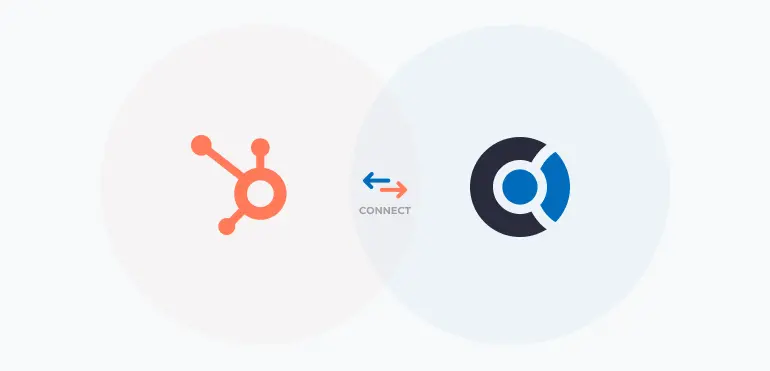Companies depend on loyal and active users to stay in business. Engaged customers support your brand; they recommend it to their close circles and like all your social media posts. You need to understand and work on customer engagement to gain loyal customers.
Imagine if you defined a problem and provided a solution before the customers reached out to you. This proactive customer engagement approach anticipates the customers’ needs and connects them with the right content at the right time. It is a powerful mechanism to build trust and loyalty for your SaaS company.
In this article, we will take a look at what customer engagement is and why you should measure it. We will also share some of the most important customer engagement metrics to track.

What is customer engagement?
The simplest definition of customer engagement is the interactions between a company and its customers. Everything that makes up this relationship from a like on social media to a testimonial on your website contributes to customer experience. It overlaps with and defines SaaS marketing metrics as well.
Every company dreams of having super loyal customers. As part of digital marketing efforts, customer engagement refers to finding better ways to nurture and strengthen this relationship for a long period of time. You want your business to be their sole service provider and for them to remain as happy, active, and satisfied customers as long as possible.
Why measure customer engagement?
Measuring customer engagement gives you valuable insight into evaluating your customer relationships. It has many benefits, such as understanding the needs of your customers, identifying weak spots in your customer engagement strategy, using customer behavior to design an objective approach to customer engagement, defining customer success, and evaluating your performance.
What are customer engagement metrics?
Customer engagement metrics are measurable variables related to user engagement in your business. These metrics help you measure whether your marketing strategies are paying off and customers’ expectations are met.
Here’s a list of the key metrics that will significantly boost your customer engagement:
- Net Promoter Score (NPS)
- Customer Satisfaction Score (CSAT)
- Customer Lifetime Value (CLV or LTV)
- Customer Health Score
- Daily Active Users (DAU)
- Conversion Rate
- Feature Uses
- Shares
- Page Views
- Churn Rate
10 Customer Engagement Metrics
1. Net Promoter Score (NPS)
Net Promoter Score (NPS) is one of the best ways to measure customer loyalty and happiness. It is also one of the easiest metrics to use: Collect customer feedback by asking your customers if they would recommend your service to their friends, family, or colleagues. Then, ask them to give you a score from 1 to 10.

Scores of 0-6 are known as detractors and they are not satisfied with your company at all and may spread negative word-of-mouth about your business.
Scores of 7-8 are known as passives. Their user experience has been good most of the time; however, they are not enthusiastic enough about your service to recommend it to others. They can easily switch to your competitor in the future.
Scores of 9-10 are known as promoters and they are ready to spread the word about your company. They regularly use your products or services and are the most avid users.
Tools to Measure NPS:
- SurveyMonkey
- UserGuiding
- AskNicely
- Typeform
- Zonka Feedback
2. Customer Satisfaction Score (CSAT)
The customer satisfaction score, also known as CSAT, is commonly used as one of the key performance indicators for improving customer success and product quality. You can use customer satisfaction score after a phone call with your client, after their online purchase, and so on.
CSAT focuses on how easy or difficult a customer finds to complete their tasks with your product or service. Similar to NPS, they can give you a number based on their experience, or you can customize measuring your CSAT by adding smiley faces or emojis. You can be creative with your options if you are clear with your measuring spectrum.
To track CSAT, divide the number of satisfied customers by the number of survey responses. Then multiply the result by 100 to get a percentage.
Tools to Measure CSAT:
- BirdEye
- Qualtrics
- Lumoa
- NiceReply
- Klaus
3. Customer Lifetime Value (CLV or LTV)
The customer lifetime value (CLV or LTV) estimates how much revenue you are likely to see from a customer over the entire time period of their subscription. In general, CLV helps work out your customer acquisition cost (CAC) and what you might miss out on if your customer churn increases.
Calculating your customer lifetime value requires additional data such as how often a customer buys from you, what they spend, and how long they stay as active users. You also need to check how much you spend to acquire a single customer and whether this cost is justifiable.
Once you analyze the data, multiply the average customer lifecycle by the revenue per customer and extract performance and maintenance expenses, such as marketing campaigns, to figure out your customer lifetime value.
Tools to Measure CLV:
- ChartMogul
- HubSpot
- Unbounce
- Kissmetrics
4. Customer Health Score

Customer health score is a metric used to determine whether a customer is inclined to stay, engage, or churn. This metric benefits customer success teams because it bridges the gap between the team and customers.
In the last few years, calculating customer health scores has become increasingly necessary for SaaS companies. This is because this metric gives valuable insight into how a customer interacts with your SaaS product. You can understand if they are getting the most value from your service, using all available features, and so on.
If they are not taking action with your product, they will be more likely to churn. Measuring your customer health score depends on multiple variables:
- define the outcome based on your business goals
- define the customer segments the health score applies to
- determine which customer actions affect the score
- assign a score for each action
- measure your customer health score
Tools to Measure Customer Health Score:
- Gainsight
- Custify
- Totango
5. Daily Active Users (DAU)
For SaaS businesses, daily active users (DAU) refer to the total number of users who engage with your product on a given day. A user is considered “active” as long as they open and view your product. This metric is especially important for measuring your product’s health because it tracks how many unique users are actually using your product.
Nevertheless, this metric can be misleading on its own because it does not measure commitment. Remember that the daily active user metric only gives you data about how many users open or view your product. It is normal to expect a bump in this metric when you launch and market a new product.
However, when the interest dwindles, it will be harder to analyze who actually uses your product.
Therefore, you must find out how often people get the core value of your product. Look at multiple actions to analyze your performance. And use your results to improve: Simplify your features and drop off unnecessary details.
6. Conversion Rate
There are multiple ways a customer can choose to engage with your brand. For a SaaS business, every touchpoint is another possible gateway for your audience to interact with you, and it is possible to use these points as data to monitor your conversion rate, from the end goal to completed action. These actions can be:
- Purchasing any of your products or services
- Downloading your app, book, lead magnet, etc.
- Submitting a form or contacting you
- Clicking on your email campaigns
- Engaging with your website
Conversion rate is the percentage of users who complete a desired goal out of the total number of visitors. To calculate your conversion rate, divide the number of conversions by the number of total interactions during the same period. This will inform you about who completed the intended action and who did not.
Conversions are ultimately linked to the overall profitability of your brand. Nevertheless, they are also beneficial to understand and improve customer retention.
Keep an eye on this metric to perfect your content marketing strategies and use this data over time to address problems you may encounter.
Tools to Measure Conversion Rate:
- HubSpot
- Hotjar
- Unbounce
- Google Analytics
7. Feature Use
Measuring feature usage can tell which parts of your product or service the customers often use (or don’t use). SaaS companies and ecommerce owners can refine their key features and solutions with this metric.
Feature adoption, similar to feature use, aims to understand if the users interact with a specific feature of your product. In other words, have they recognized the value of this feature? Or are they struggling to use it? Feature adoption looks at user behavior to analyze the changes you’ve made. If your feature adoption rates are low, there is a problem you need to solve quickly.
Think about actions you want to track and use your features to keep in touch with engaged customers. You can customize various tools to track feature usage, but it’s best to do it through an app that will allow you to map this data to various clients and then give you custom outreach opportunities – Intercom & Custify are great examples.
8. Shares & Mentions
Sharing is caring for SaaS businesses too. Therefore, the number of shares your content gets determines how many people relate to or get inspired by your content.
Despite being overlooked as a vanity metric, sharing is among the most influential user engagement metrics. Sharing relatable and engaging content helps build organic reach and achieve business growth for your website.
9. Page Views
Tracking page views is beneficial to understand how many times the users have visited a particular page on your website. This metric enables you to measure the overall traffic your website gets in a specific time period.
However, monitoring page views alone does not generate enough data to improve customer engagement. Therefore, it is important to combine it with other metrics like unique visitors, conversion rate or time on page to interpret the number of page views accurately.
The easiest way to track pageviews is Google Analytics. In fact, most website tracking tools will give you this feature at no cost.
10. Churn Rate
Churn rate refers to the percentage of SaaS customers who cancel their subscriptions over a period of time. According to ProfitWell, the benchmark for SaaS churn rate is between 3% and 8%.
To calculate your customer churn rate, divide the number of churned customers over a period of time by the number of customers you acquired at the beginning of the same period. Then, multiply that number by 100 and get a percentage.
It is the nature of any business: Some customers will leave your product or services for various reasons. However, if you are losing out on customers and revenue on a regular basis, your strategies fail at some stage which will decrease the viability of your company. That is why it is important to minimize customer churn rate.
Engaged customers will stay with you for a longer period of time which means that you can spend less time (and money) on acquiring new ones. If you want to sustain high levels of revenue growth and customer retention, keep an eye on churn rate.
Introducing incentives like webinars, free books or setting up personalized messages is a good way to increase customer loyalty and reduce churn rates.
Tools to Measure Churn Rate:
- Baremetrics
- Hotjar
- ProfitWell
- Custify
Final Words
To cut to the chase, tracking customer engagement metrics is important for your success. If you understand how and why customers are engaging (or not engaging) with your website and brand, it will be easier to tweak the areas that need improvement. Keep in mind that if you do not provide a great customer experience for your clients, they will switch to your competitors.
Collect data, analyze, and evaluate your strategies to increase customer loyalty and ensure the long-term viability of your SaaS company.
Net Promoter, Net Promoter System, Net Promoter Score, NPS and the NPS-related emoticons are registered trademarks of Bain & Company, Inc., Fred Reichheld and Satmetrix Systems, Inc





